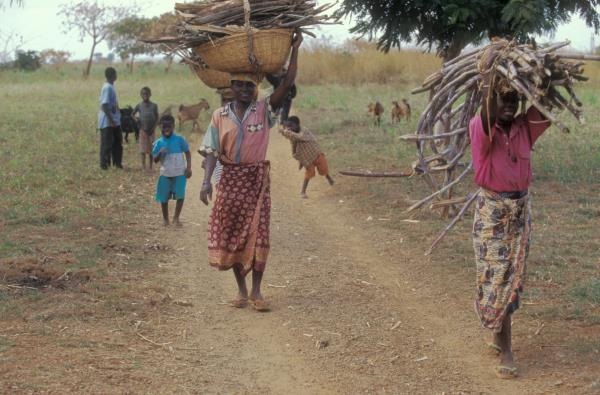
23 February 2016, Clark, Philippines/Rome - Community-based forestry has shown itself to be a potent vehicle for promoting sustainable forest management, reducing poverty and generating jobs and income for rural communities, but unlocking its true potential will require greater support by governments through policy reforms and other measures.
Many community-based forestry regimes are showing great promise as engines for sustainable development but are still performing below their potential, a new FAO report released today at the start of Asia-Pacific Forestry Week says.
Under the approach, local communities partner with governments to play a lead role in making land-use decisions and managing the forestry resources they depend on for their livelihoods.
According to "Forty years of community based forestry: A review of extent and effectiveness", almost one-third of the world's forest area is now estimated to be under some form of community-based management.
Yet in many cases, while in practice policies may exist for the decentralization and devolution of rights and responsibilities to communities, the right conditions may not yet be in place for them to fully exercise their rights.
The report outlines a series of actions needed to make community-based forestry more effective, including providing communities with secure forest tenure, improving regulatory frameworks, and transferring appropriate and viable skills and technology.
Access to markets and knowledge of market mechanisms are also essential if communities and smallholders are to commercialize their forest products, which can significantly contribute to poverty reduction.
"Indigenous peoples, local communities and family smallholders stand ready to maintain and restore forests, respond to climate change, conserve biodiversity and sustain livelihoods on a vast scale", said Eva Müller, Director of FAO's Forestry Policy and Resources Division. "What is missing in most cases is the political will to make it happen. Political leaders and policy makers should open the door to unleash the potential of hundreds of millions of people to manage the forests on which the whole world depends for a better and sustainable future".
Sharing best practices
The report also cites a number of successful examples of community-based forestry from around the world.
A study in four eastern hill districts in Nepal showed that denuded hills had been regenerated and the condition of forests improved substantially following the introduction of community forestry. As a result, the total number of trees per hectare increased by more than 50 percent while the overall area of forests grew by around 30 percent over a 15 year period.
Mexico has a long history of community forestry with up to 80 percent of the country's forests under the legal jurisdiction of communities. Many of them operate local forest enterprises to commercialize the timber they produce. Forest communities there benefit from a combination of tenurial rights including strong commercial rights to harvest and market timber products.
In Cameroon, revisions to forest laws in 1994 have enabled community associations and cooperatives to acquire exclusive rights to manage and use up to 5 000 hectares of forest per community under a 25-year contract, resulting in the creation of 147 new community forest management areas covering a total area of 637 000 ha of humid forest.
In the Gambia, 10 percent or approximately 45 000 ha of the country's forested land is managed either through community-based forest management or joint forest park management. In the 25 years since the introduction of community-based forestry, the forest area has increased by more than 10 percent.
A vital sector for Asia-Pacific region
Asia-Pacific Forestry Week (22-26 February) - one of the largest and most important forestry events in the region - has been co-organised by FAO and the Asia-Pacific Forestry Commission (APFC) in partnership with the Department of Environment and Natural Resources (DENR) of the Philippines.
It brings forestry leaders, policy makers and industry experts from 30 countries together to discuss the most pressing issues for forestry and its role in advancing sustainable development in Asia-Pacific. This includes the new UN Sustainable Development Goals, regional trade agreements, sustainable production to meet the region's growing demand for wood and timber, climate financing, enhancing disaster resilience, and other issues.
"Through the Sustainable Development Goals we have an opportunity and responsibility to help unlock the full potential of forests in supporting sustainable development that no other generation has had before," Müller said during the Week's opening ceremony today.
"Like the SDGs, the Paris Climate Change Agreement also gives a substantive role to forests in achieving its ambitious objectives and is expected to mobilize financial resources that help convert the political commitment to concrete actions in support of forests and sustainable forest management", she added.